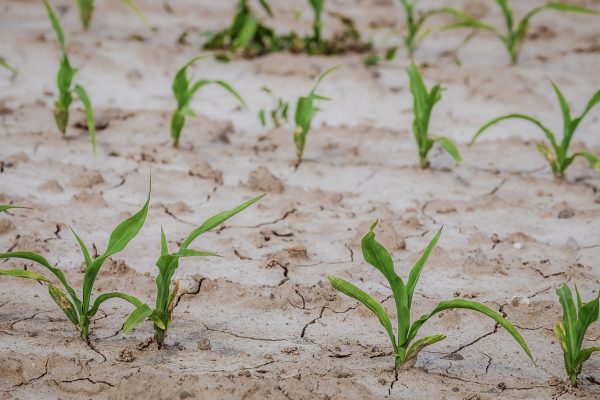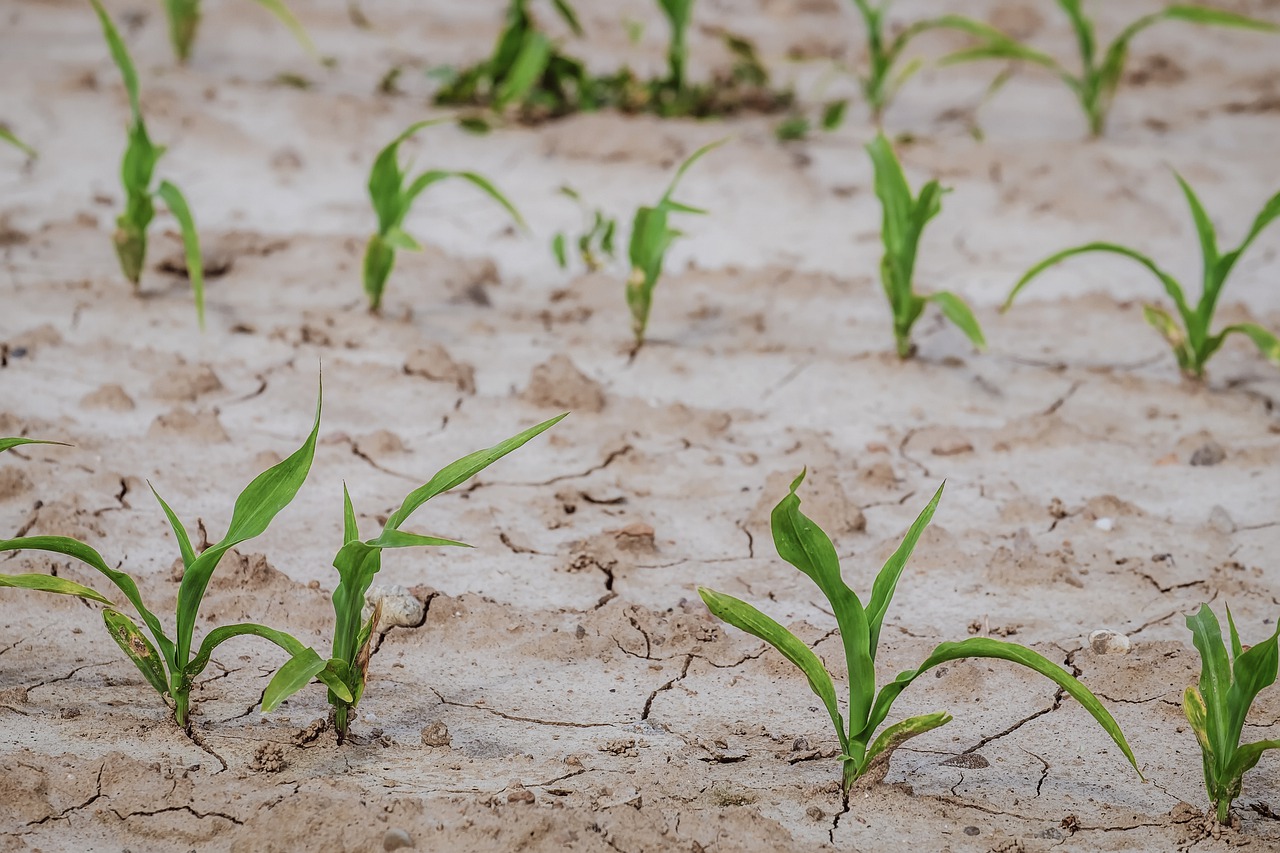 Crops all over America are failing, and the true extent of this crisis is starting to become clearer. Months of endless rain and nightmarish flooding prevented many farmers in the middle of the country from getting their crops planted on time, and millions of acres didn’t get planted at all. And if all that wasn’t enough, this month record high temperatures have been absolutely brutal for vulnerable young crops across the Midwest. We shall see how the rest of the summer goes, but at this point it appears that yields are going to be way, way below expectations, and that has very serious implications for all of us.
Crops all over America are failing, and the true extent of this crisis is starting to become clearer. Months of endless rain and nightmarish flooding prevented many farmers in the middle of the country from getting their crops planted on time, and millions of acres didn’t get planted at all. And if all that wasn’t enough, this month record high temperatures have been absolutely brutal for vulnerable young crops across the Midwest. We shall see how the rest of the summer goes, but at this point it appears that yields are going to be way, way below expectations, and that has very serious implications for all of us.
I told my readers that I would stay on top of this story, and things have deteriorated substantially since the last time I wrote about this.
Earlier, I stumbled upon a brand new AGPRO survey of U.S. corn farmers that seems to indicate that things are worse than almost all of us thought. According to that survey, 12 percent of U.S. corn farmers didn’t plant crops at all this year, and 48 percent expect “below-average yields this harvest”…
Forty-eight percent of U.S. farmers say they expect their corn crop will deliver below-average yields this harvest, according to a Farm Journal Pulse survey conducted on Tuesday.
Of the 1,082 farmers who responded to the survey, 12% say they didn’t get their crop planted. Only 10% of farmers surveyed say their crop is above average this year.
In other words, corn farmers are telling us that they aren’t going to grow very much corn this year.
And the latest USDA crop progress report confirms that. In particular, the numbers coming from the Upper Midwest are absolutely disastrous…
Minnesota: 21% of corn had silked by July 21, compared with the five-year average of 56%; 57% was rated good or excellent, the rest fair to very poor.
North Dakota: 10% of corn had silked by July 21, compared with the five-year average of 32%; 77% was in good or excellent shape, the rest fair to very poor.
South Dakota: 9% of corn had silked by July 21, down from the five-year average of 50%; 58% was rated good or excellent, the rest fair to very poor.
You can look at the raw numbers for yourself right here. Nationally, 35 percent of corn had silked as of July 21, but on July 21 last year that number was sitting at 78 percent.
That is less than half.
Earlier this year, there were some that were criticizing me for sounding the alarm about crop failures, but after these numbers what is happening should be apparent to everyone.
And a similar pattern is happening with soybeans. Here are more numbers from the Upper Midwest…
Minnesota: 47% of soybeans had bloomed by July 21, compared with the five-year average of 70%; 60% was in good or excellent condition, the rest fair to very poor.
North Dakota: 49% of soybeans had bloomed by July 21, compared with the five-year average of 70%; 66% was in good or excellent shape, the rest fair to very poor.
South Dakota: 45% of beans had bloomed by July 21, compared with the five-year average of 65%; 47% was rated good or excellent, the rest fair to very poor.
Nationally, 40 percent of soybeans had bloomed as of July 21, but on July 21 last year that number was sitting at 76 percent.
That is just over half.
And just because crops are on schedule does not mean that they are in good condition.
According to one report, over 20 million corn and soybean acres are “in poor to very poor condition”…
More than 20 million U.S. corn and soybean acres remain in poor to very poor condition. Illinois leads with 4.2 million acres in poor or unfavorable condition. The news isn’t much better in Iowa where 2 million acres are also listed under similar conditions.
Let that sink in for a moment.
20 million acres.
And all of this is happening at a time when crops are failing all over the world due to nightmarish weather conditions. For much more on this, please see my previous article entitled “Look At This Map – It Shows Devastating Crop Losses Are Literally Happening All Over The Globe”.
For U.S. farmers, weather conditions at the end of the growing season are going to be critical. Many are hoping that warm weather will last as long as possible in order to allow their crops time to catch up and come to maturity.
But if an early hard frost comes along, that is going to be absolutely devastating.
In any event, it has become crystal clear that production is going to be way, way down this year. Of course we are all going to want the same amount of food to eat next year, and so that is going to put an enormous amount of stress on the system.
Any college course in economics will teach you that when demand remains the same and supply goes down, prices go up. In the short-term we should expect to see food prices steadily rise, and that trend should accelerate as this crisis intensifies. I would very much encourage you to get prepared while you still can.
Globally, we are in an even more precarious situation. More than 7.5 billion people currently live on our planet, and we really struggle to feed them all even during the best years.
So now that crops are failing all over the planet, what are we going to do?
I suspect that those at the bottom of the economic food chain will be hit the hardest. As food supplies get tighter, the wealthier countries will have the resources to secure what they need, and that will leave a whole lot of others to fend for themselves.
According to the World Bank, close to half the population of the planet currently lives on less than $5.50 a day. We are talking about billions of people, and they are simply not prepared to handle a radical shock to global food prices.
 About the author: Michael Snyder is a nationally-syndicated writer, media personality and political activist. He is the author of four books including Get Prepared Now, The Beginning Of The End and Living A Life That Really Matters. His articles are originally published on The Economic Collapse Blog, End Of The American Dream and The Most Important News. From there, his articles are republished on dozens of other prominent websites. If you would like to republish his articles, please feel free to do so. The more people that see this information the better, and we need to wake more people up while there is still time.
About the author: Michael Snyder is a nationally-syndicated writer, media personality and political activist. He is the author of four books including Get Prepared Now, The Beginning Of The End and Living A Life That Really Matters. His articles are originally published on The Economic Collapse Blog, End Of The American Dream and The Most Important News. From there, his articles are republished on dozens of other prominent websites. If you would like to republish his articles, please feel free to do so. The more people that see this information the better, and we need to wake more people up while there is still time.
